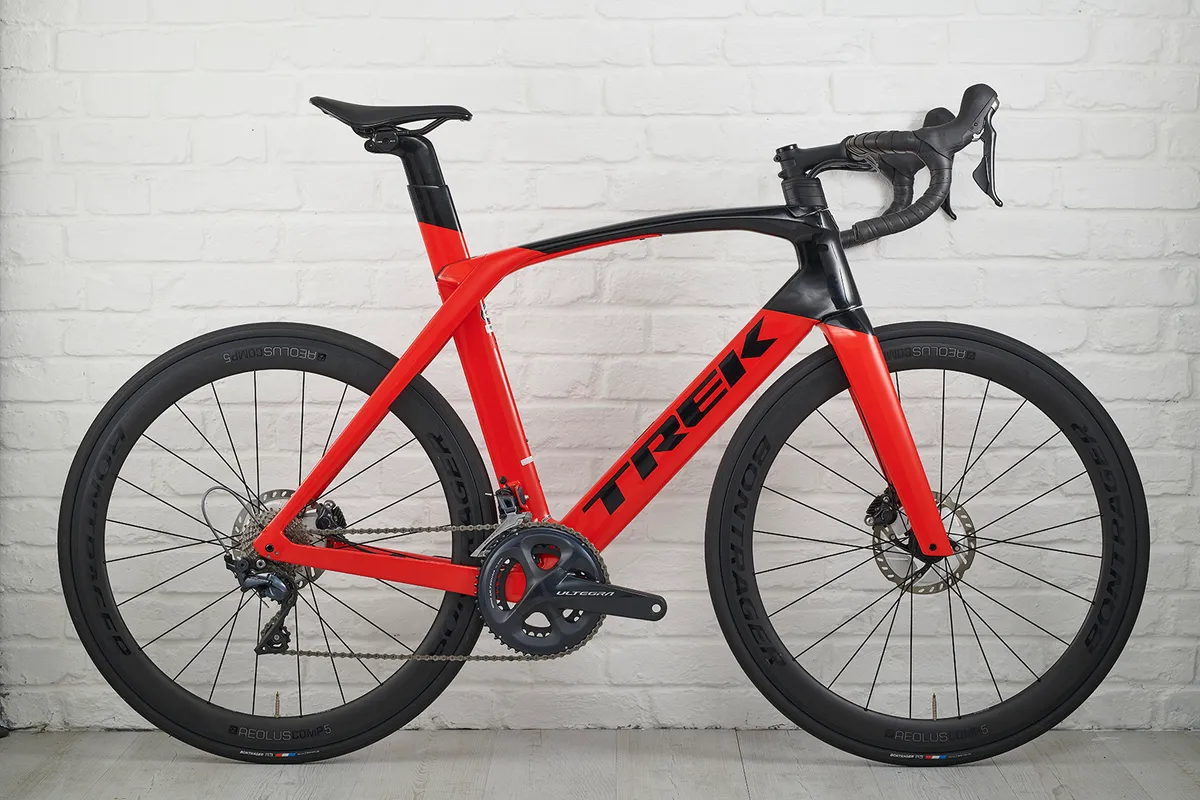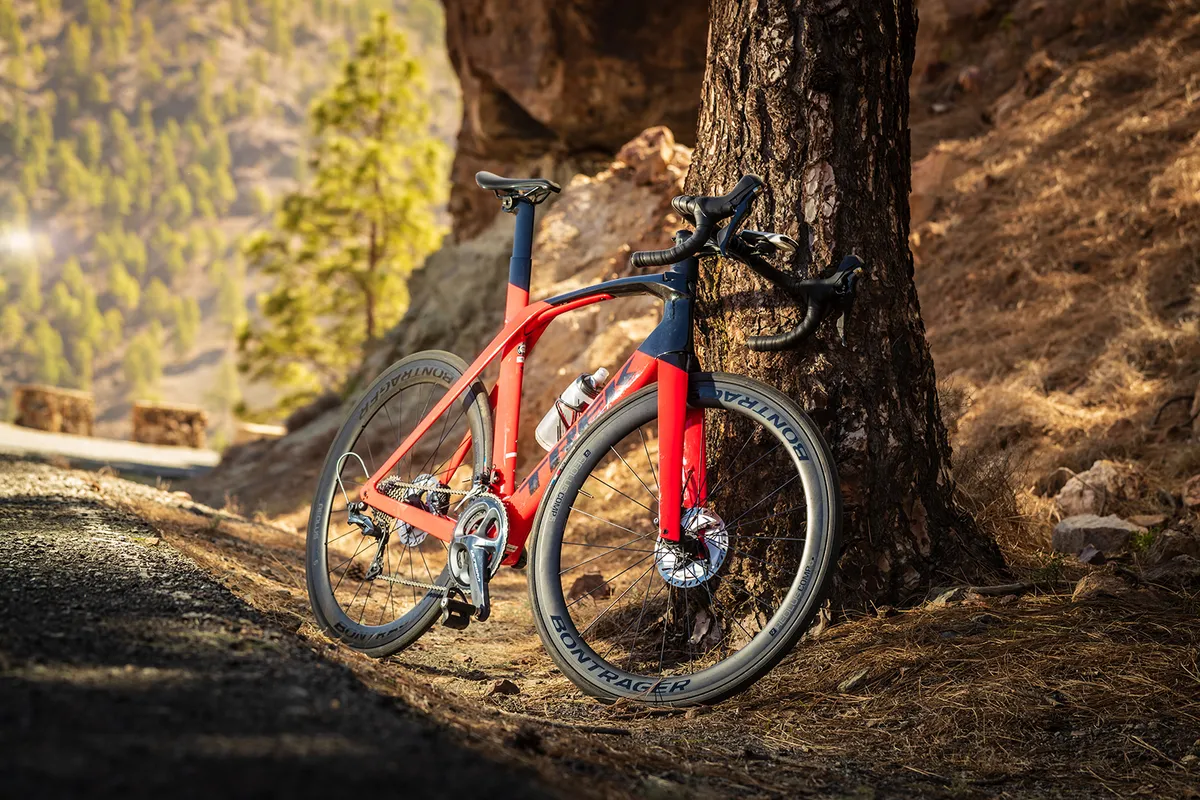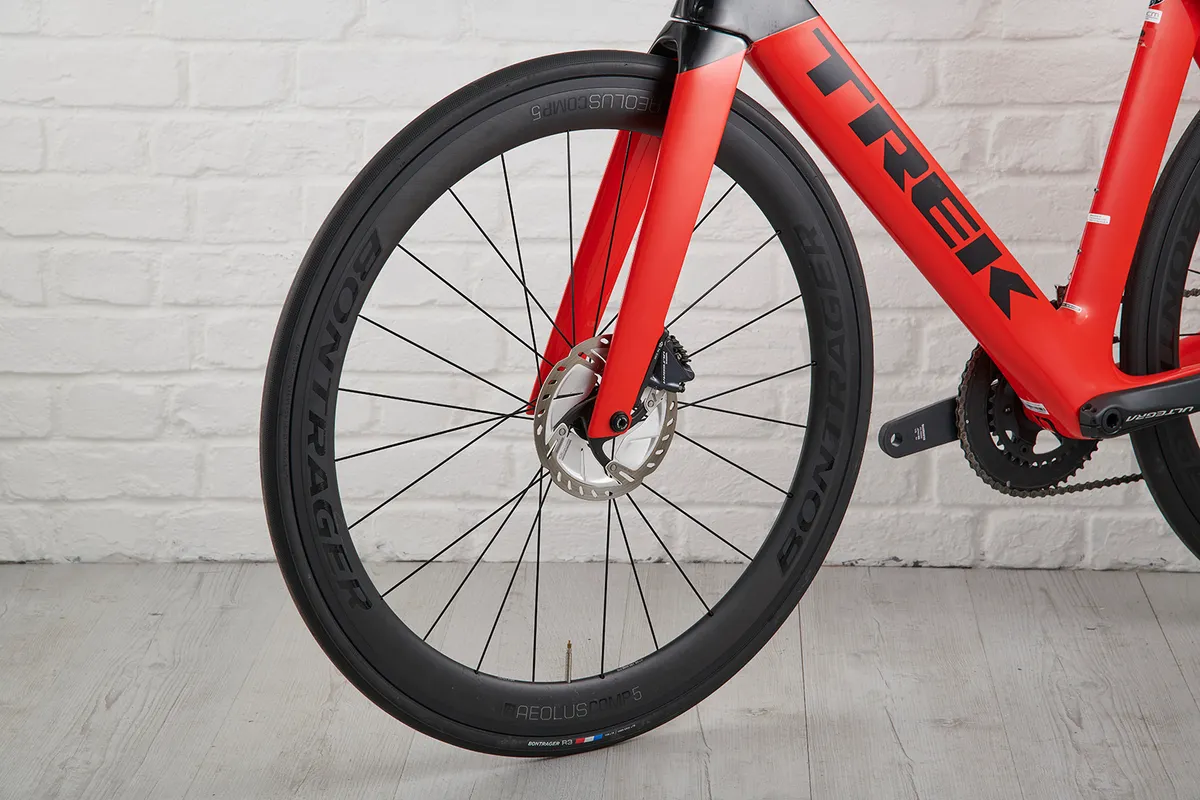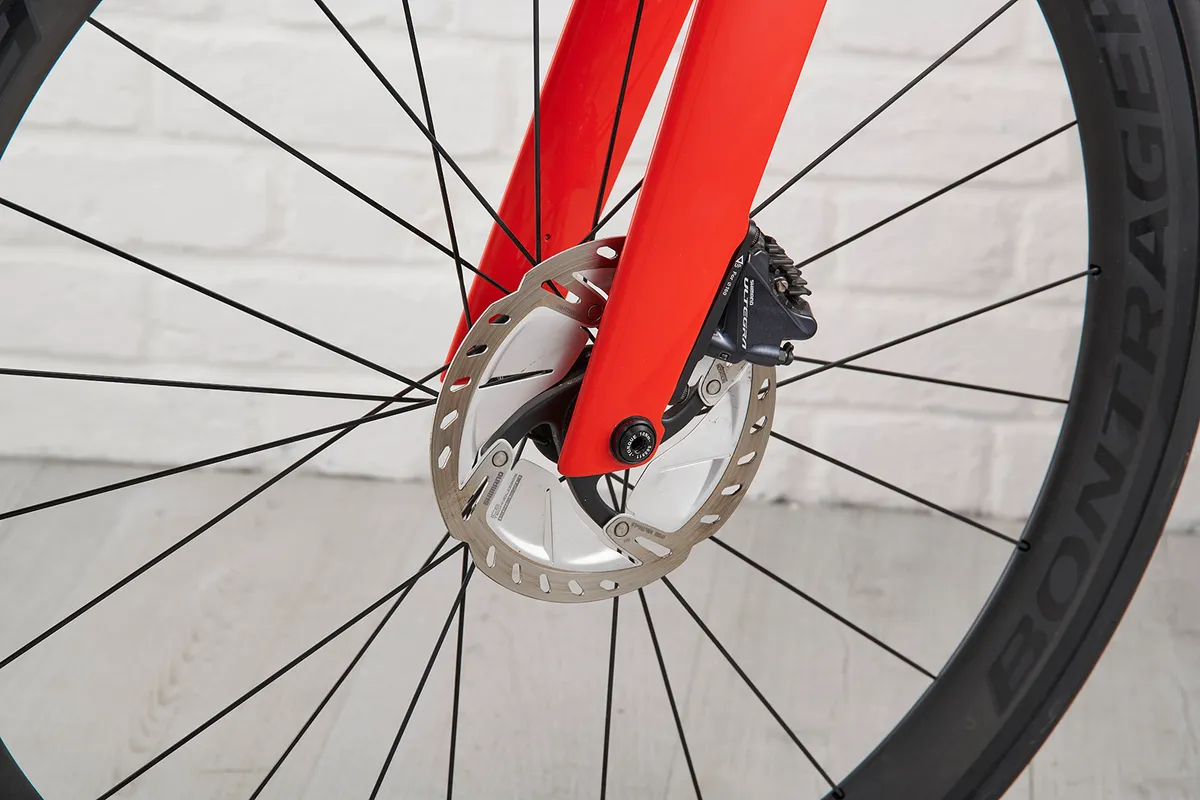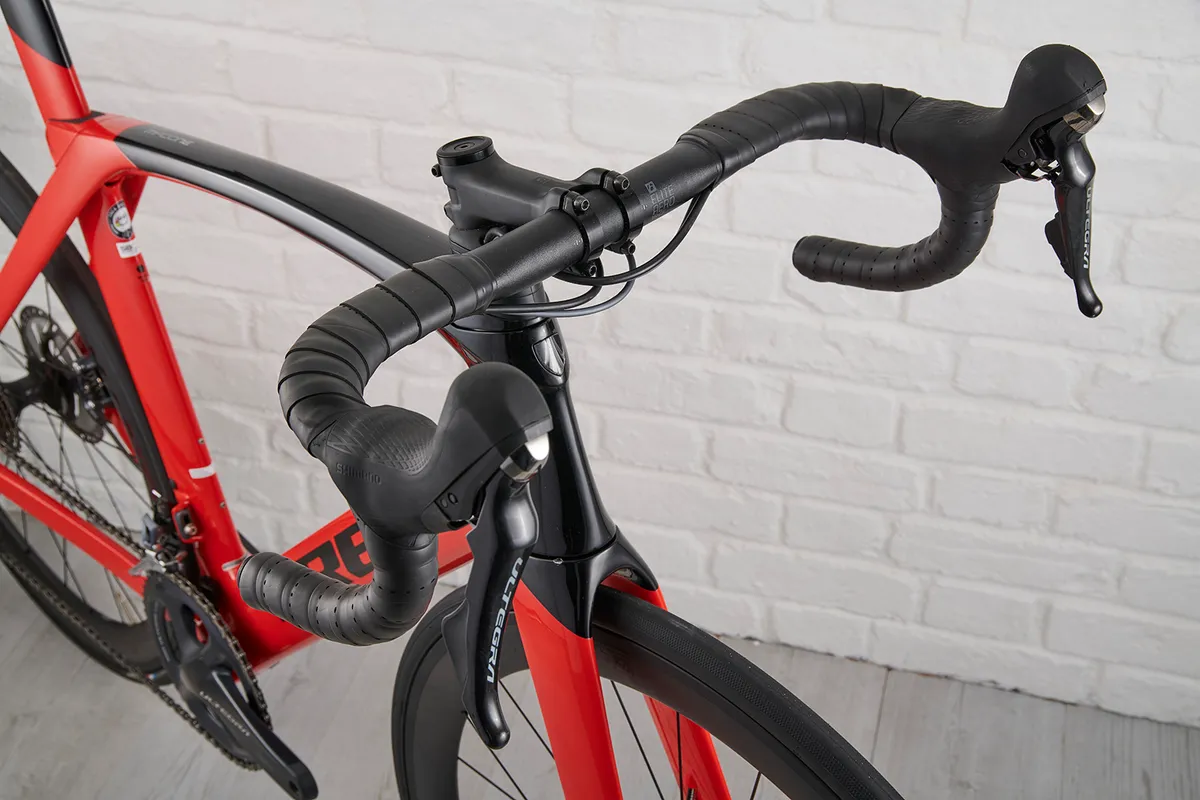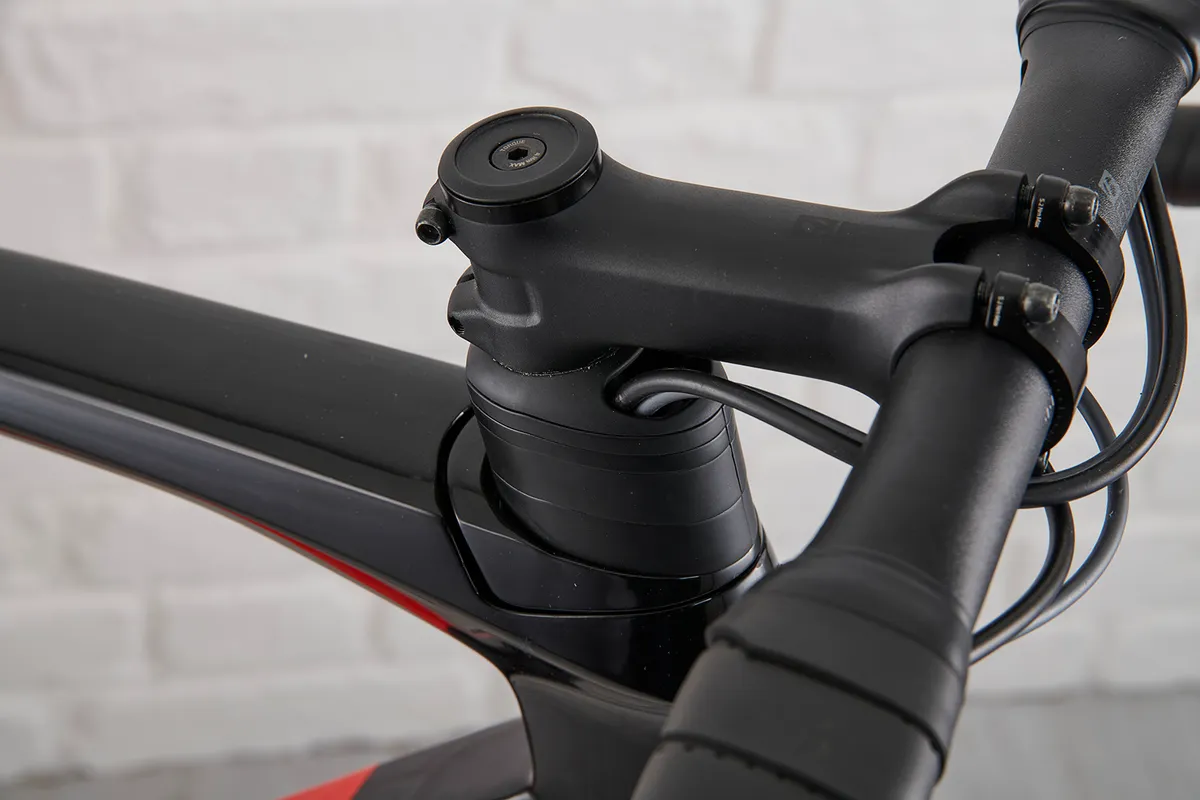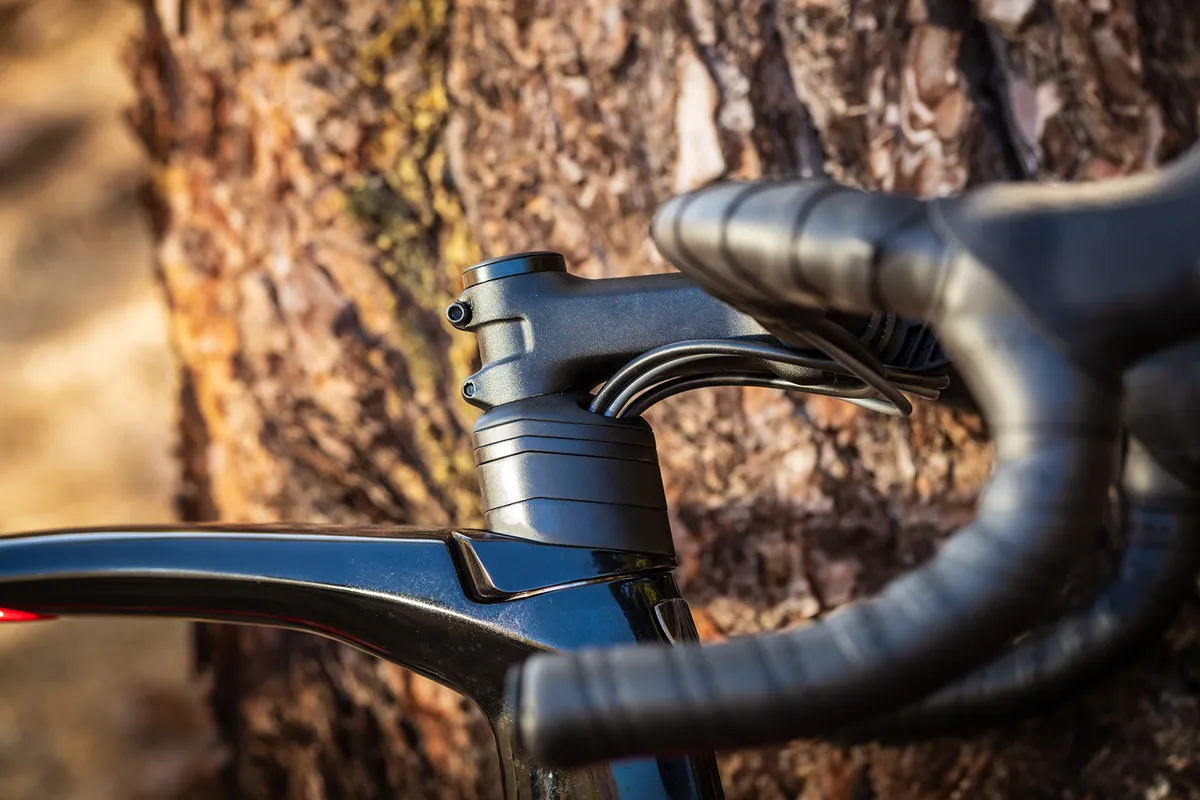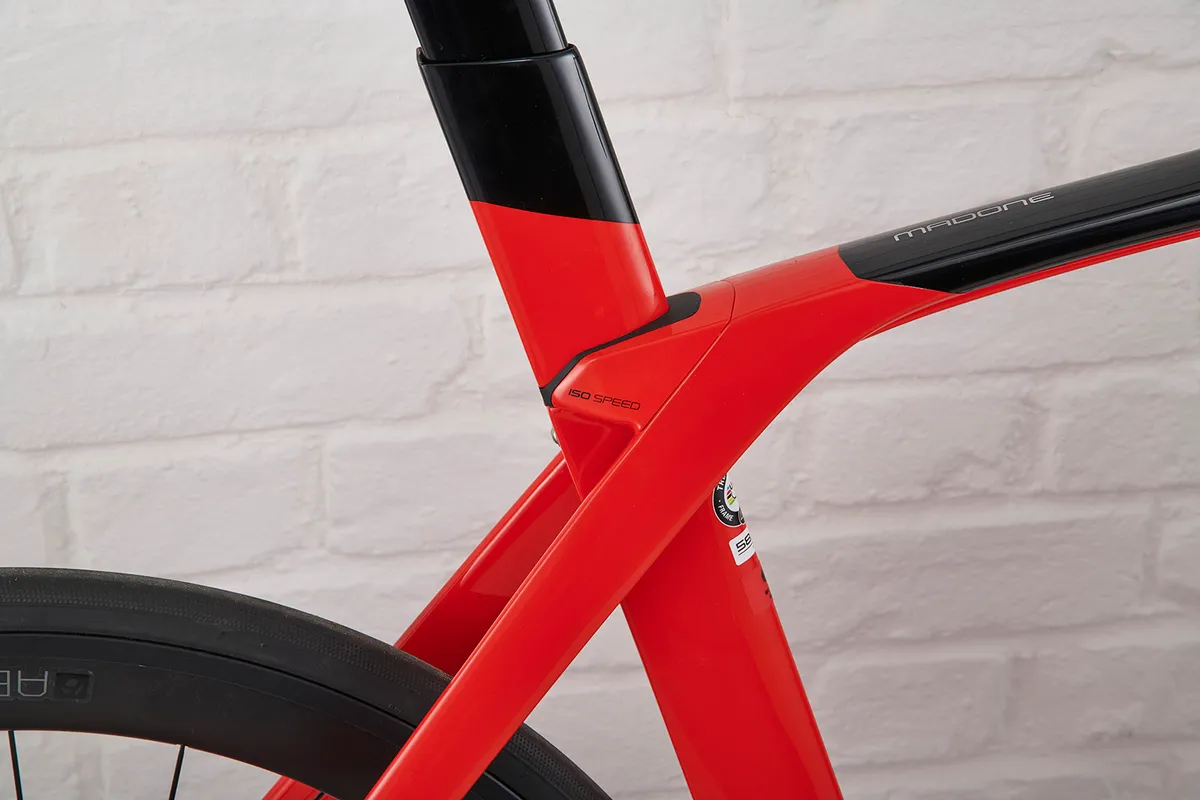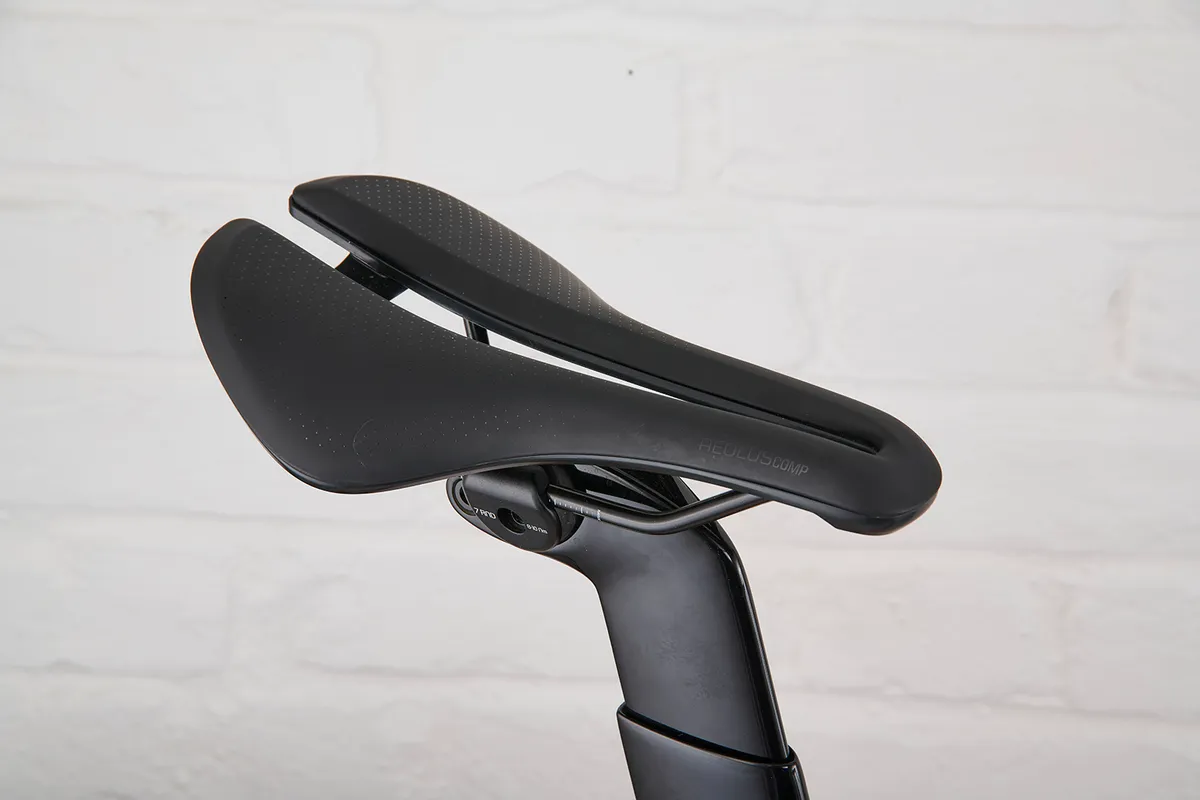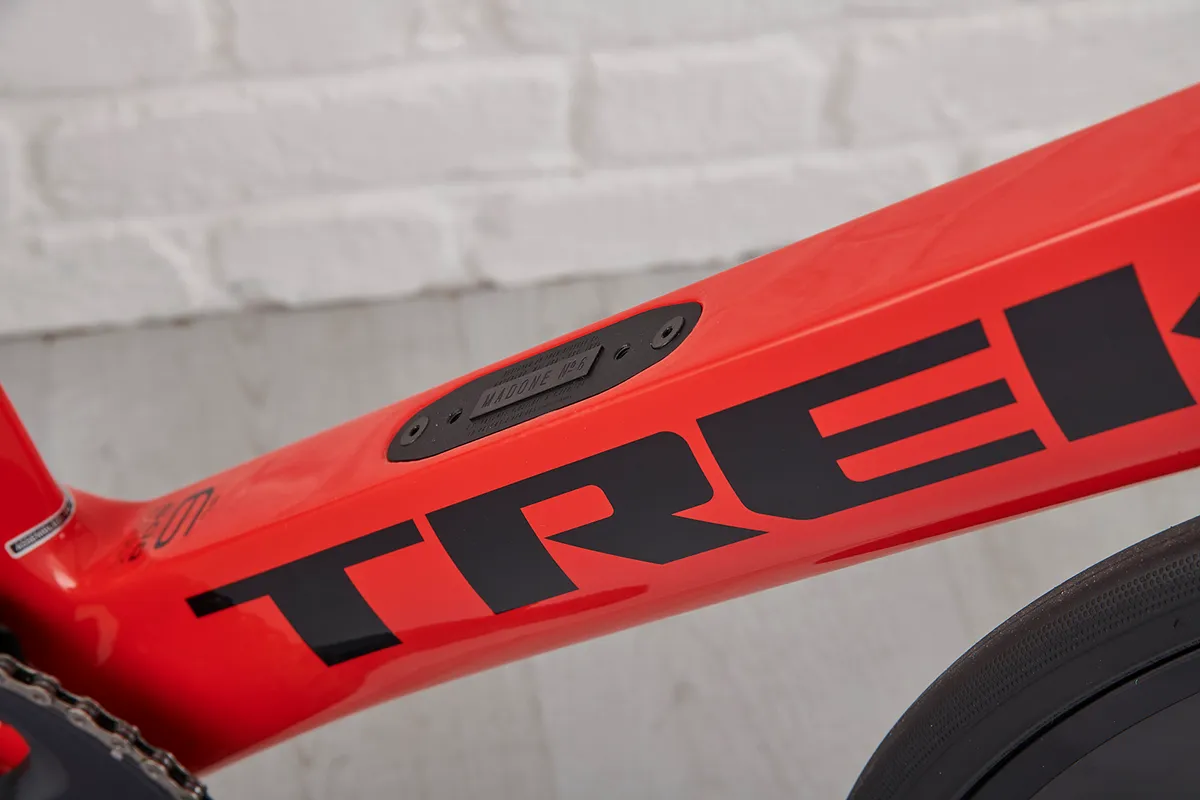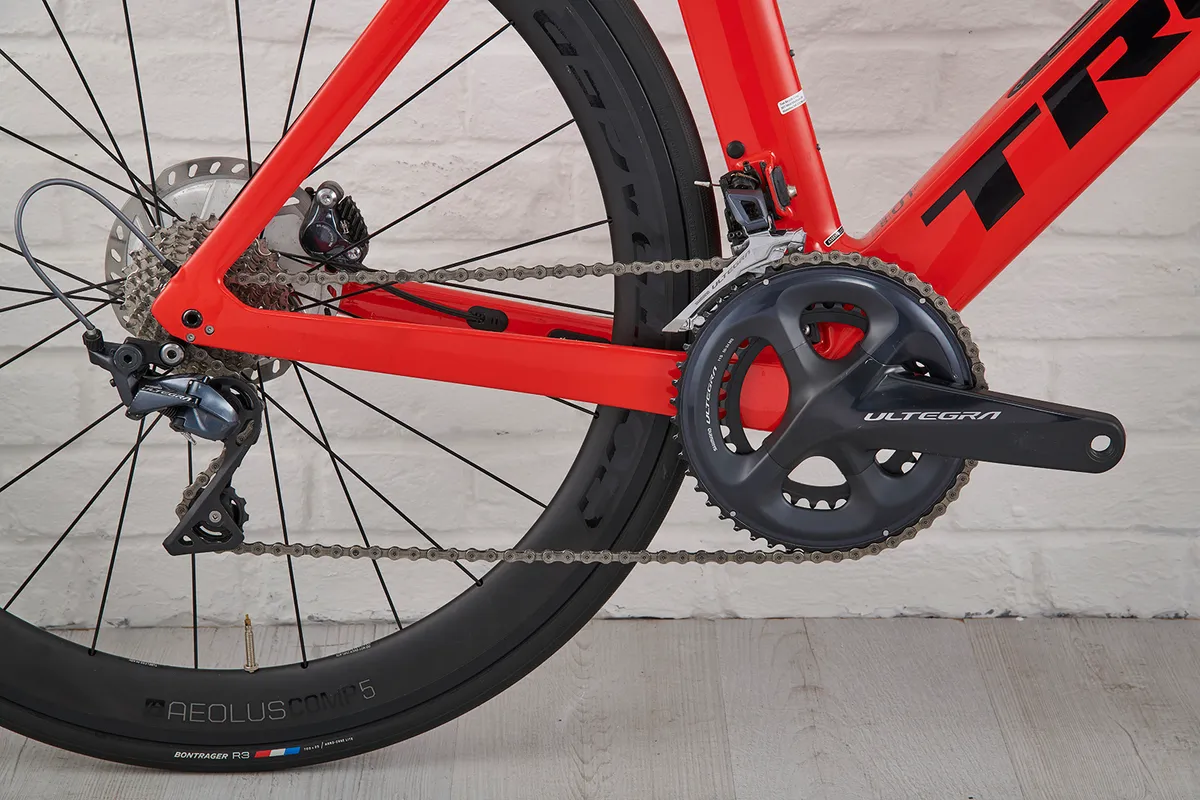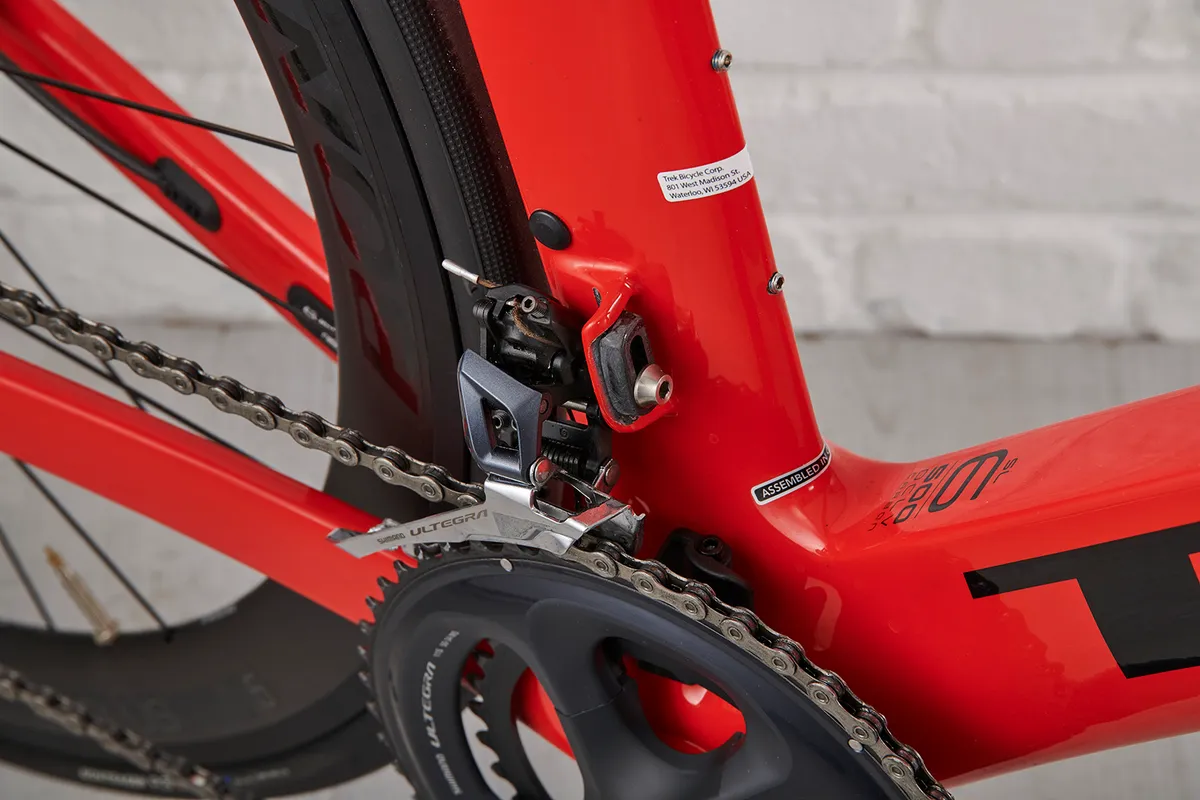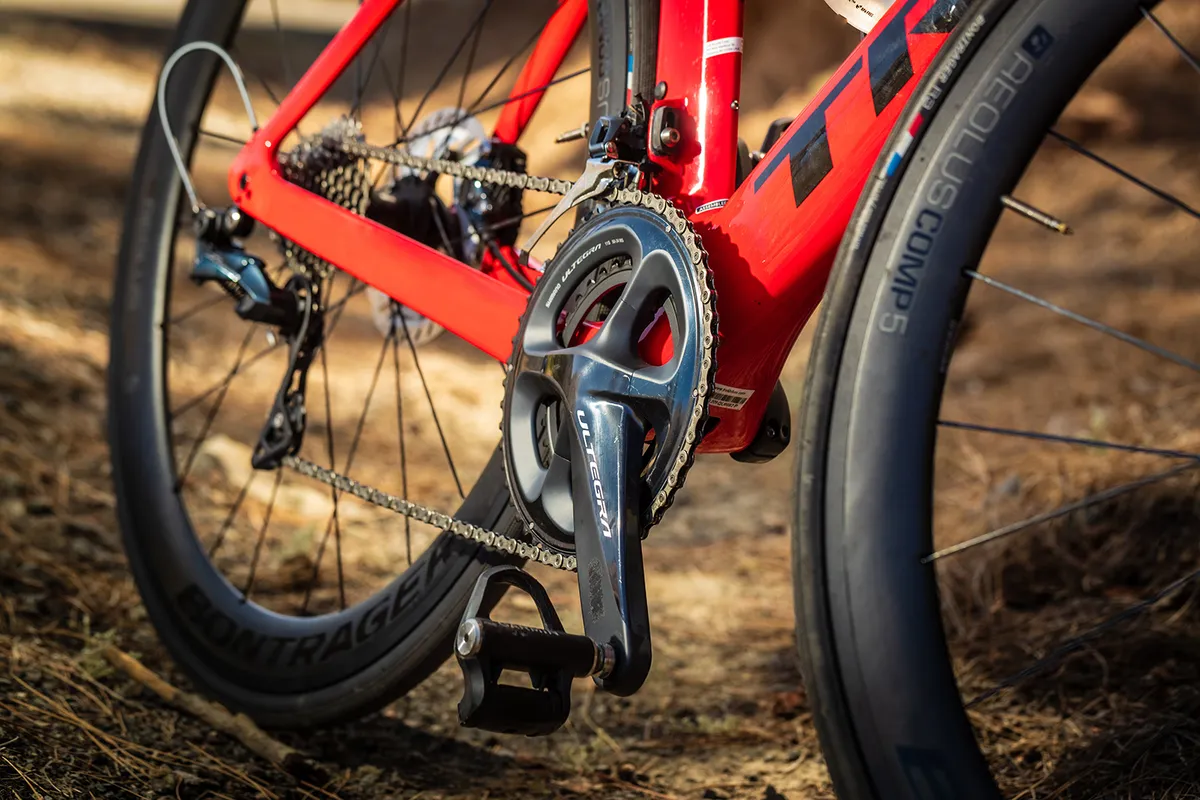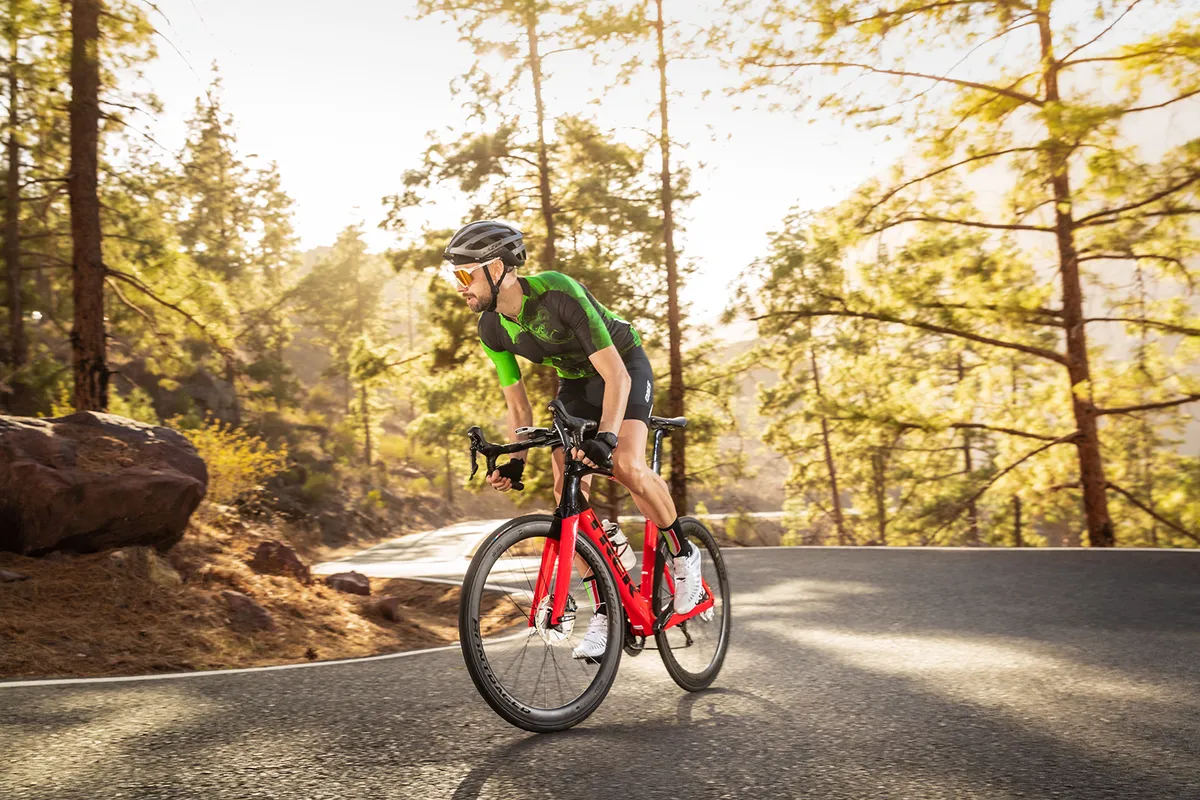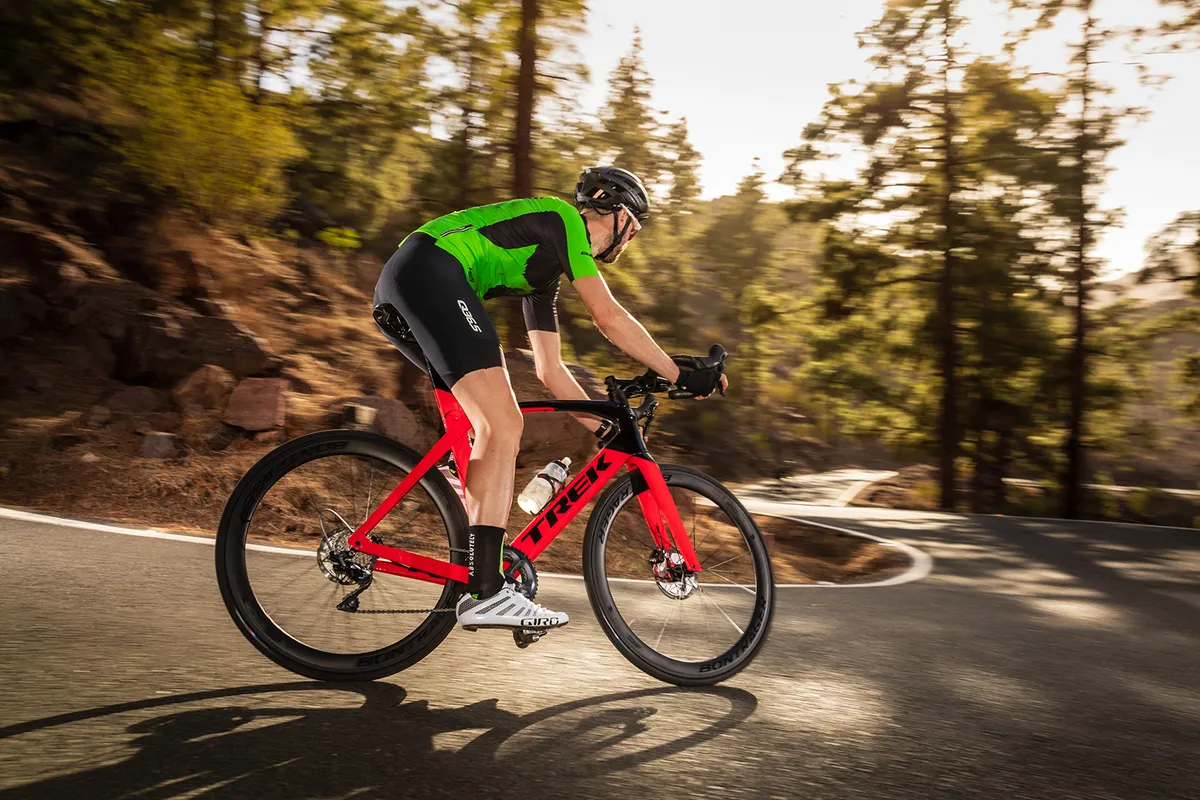The major issue with making cutting-edge aero bikes is that it’s expensive to recoup the huge development costs. So how has Trek managed to squeeze the Madone chassis replete with IsoSpeed rear suspension into this price category?
The answer lies in the front-end as Trek has done away with the expensive integrated bar and stem system and replaced it with a more cost-effective combination of alloy Bontrager Pro stem and Aero VR-CF handlebar.
Cable integration, however, is still tidy because Trek has designed a set of headset spacers and top cap that still route all the cables and hydraulic hoses down the head tube in front of the steerer.
Bike of the Year 2020
The Trek Madone SL6 Disc is part of our annual Bike of the Year test and our Aero Road Bike of the Year winner.
Head to our Bike of the Year hub for the full list of winners, categories and shortlisted bikes, as well as the latest reviews – or read our behind-the-scenes feature on how we tested Bike of the Year 2020.
The frame is designed around Trek’s KVF tube profiles (Kammtail Virtual Foil), which looks like a shortened aero dynamic wing cross-section with the long tail section chopped, ‘cheating’ the air into believing it’s a long airfoil, making for a less turbulent path through the air.
The idea behind dropping seatstays on modern bike design is two-fold: it minimises the stays, thus reducing drag, and it allows the seat tube and seatpost to have more unsupported length, which allows flex.
Trek with the unique design of the Madone and its IsoSpeed back-end means it doesn’t have to drop the stays for comfort or minimise the size of the stays for flex because IsoSpeed isolates the seat tube from the stays and top tube.
The freedom of the seat tube to move fore and aft is controlled by an elastomer. The tension in the system is adjustable by undoing the Allen head bolt on the damper and the Allen head bolt on the underside of the top tube, then pushing the seat tube forward and sliding the adjuster to your desired setting.
Trek claims that the Madone offers twice the compliance of any of its rivals with the IsoSpeed design, and as soon as you get out on the road it’s easy to see why.
The system eliminates wearing vibrations from poor road surfaces and deals with high-frequency chatter wonderfully well.
Up front, I expected things to be very different because that deeply bladed aero fork, substantial head tube plus skinny 25c tyres and deep aero wheels don’t promise comfort. So, it was a welcome surprise to discover just how composed the SL6 feels.
The aero-sculpted alloy bar is wrapped with super-thick bar tape and its spot-on ergonomics keep you comfortable. The front end dulls chatter and noise.
Just because the SL6 is a lower-priced version of Trek’s most successful race machine doesn’t mean the ride position is dumbed down either.
The SL6 is still based on its H1.5 geometry that was developed with the Trek-Segafredo race team. On my 58cm bike you have the aggressive ride position imposed by a 581mm stack and 396mm reach paired with a steep 73.8-degree head angle and 73-degree seat.
The Madone is a bike designed to go fast, so it’s no surprise that the fork’s trail and offset encourage fast handling.
Bontrager’s carbon Aeolus wheel range extends from WorldTour-proven XXX wheelsets down to the Comp 5 models fitted here.
The Comp 5 is an alloy rim that has a structurally bonded 50mm deep carbon fairing. The centrelock hubs are smooth rolling and the wheel build is tight; the tautness in the wheels and the fast-acting freehub offset the 1,860g weight for a pair.
The wheels are tubeless ready but the R3 tyres fitted are not, so tubeless is an option.
The rim’s internal 18mm width is a good match for the 25c tyres. The bikes’s 8.73kg complete weight is more than I’d like to see on paper, but it doesn’t ride like a heavy bike: the chassis’ composed manner on poor roads means you can go faster and the efficiency of the design, including the wheels, means it holds speed well.
Like the majority of bikes in this year’s Bike of the Year, Trek has put its faith in the Ultegra group and it performs just as well as expected.
In all, the SL6 is a composed race machine with a compliant ride that balances fast handling and comfort unlike any other aero-road bike around.
Trek Madone SL6 Disc geometry
- Seat angle: 73 degrees
- Head angle: 73.8 degrees
- Chainstay: 41.1cm
- Seat tube: 55.3cm
- Top tube: 57.4cm
- Head tube: 17.1cm
- Fork offset: 4cm
- Trail: 5.7cm
- Bottom bracket drop: 6.8cm
- Wheelbase: 992mm
- Stack: 58.1cm
- Reach: 39.6cm
Product
| Brand | trek |
| Price | 6500.00 AUD,4499.00 EUR,3900.00 GBP,4700.00 USD |
| Weight | 8.7300, KILOGRAM (58cm) - |
Features
| Fork | KVF carbon |
| br_stem | Bontrager Pro stem |
| br_chain | Shimano Ultegra HG701, 11-speed |
| br_frame | 500 series OCLV carbon |
| Tyres | R3 Hard-Case Lite 25c tyres |
| br_brakes | Shimano Ultegra hydraulic disc |
| br_cranks | Shimano Ultegra R8000, 50/34 (compact), 175 mm length |
| br_saddle | Bontrager Aeolus Comp |
| br_wheels | Bontrager Aeolus Comp 5 disc |
| br_shifter | Shimano Ultegra R8020, 11-speed |
| br_cassette | Shimano Ultegra R8000, 11-28, 11-speed |
| br_seatpost | Madone Aero carbon seatmast |
| br_handlebar | Bontrager Elite Aero VR-CF alloy |
| br_availableSizes | 50, 52, 54, 56, 58, 60cm |
| br_rearDerailleur | Shimano Ultegra R8000, short cage, 30T max cog |
| br_frontDerailleur | Shimano Ultegra R8000, braze-on |
